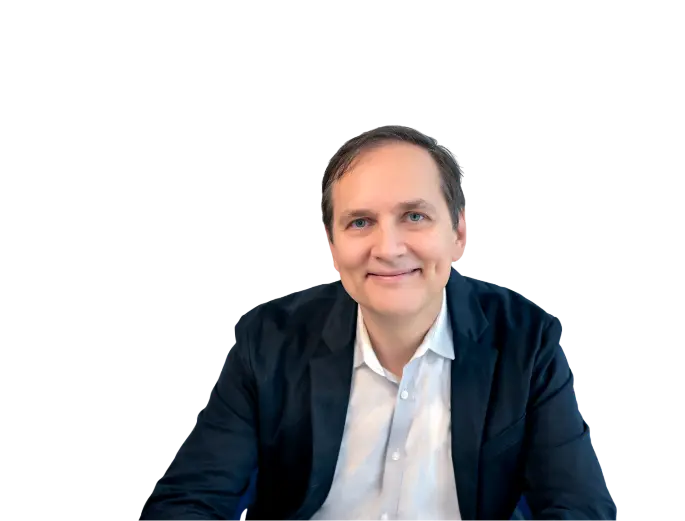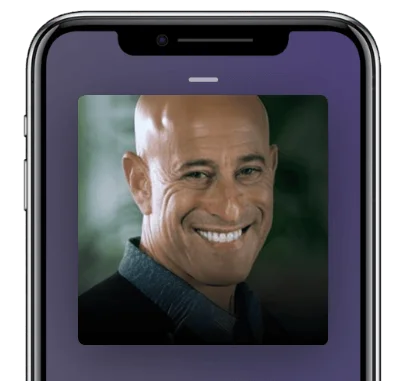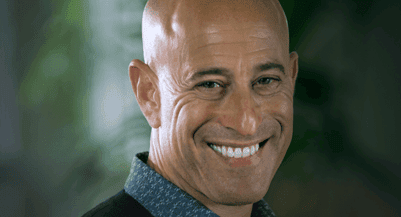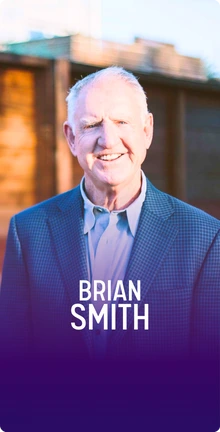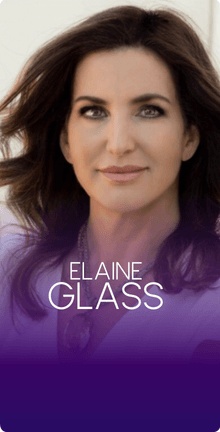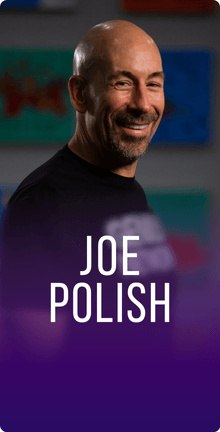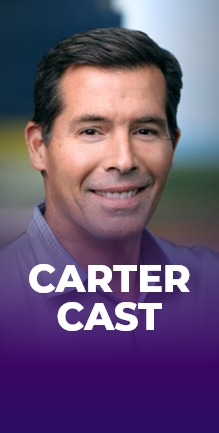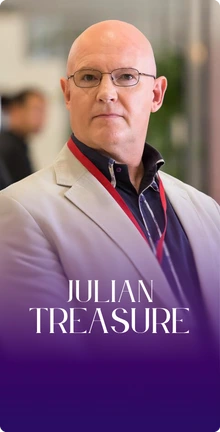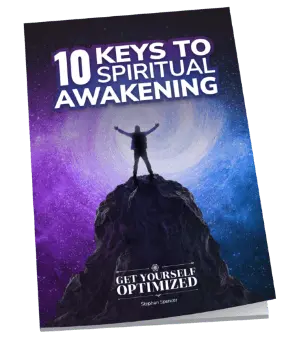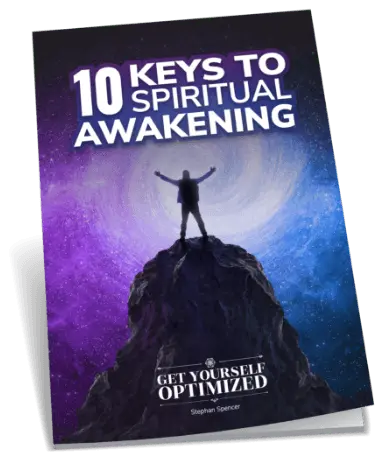In this Episode
- [01:37]Adam starts things off by talking about his recent book Pivot: The Art and Science of Reinventing Your Career and Life and explaining what inspired him to write it.
- [05:41]Even before the book, Adam had a calling to reach a larger audience. How did he end up speaking to thousands of people on stages?
- [09:07]We hear the story of a low point of Adam’s life, when he asked his wife to drive him to the hospital. He then explains how this was his starting point on his current road.
- [13:03]Adam talks about what he did after getting out of the hospital.
- [15:22]Before going into the hospital, had Adam taken personal development courses or read personal development books?
- [16:01]What did Adam start doing differently after he left the hospital and felt he had a new lease on life?
- [19:11]Adam discusses whether he got a handle on his workaholism as he started his new venture and got it up and running.
- [20:51]How much of Adam’s time does he spend on the road?
- [24:22]Stephan mentions telepresence robots and how they can function, then points out that Tony Robbins is doing some holographic speaking these days.
- [26:15]Adam goes into more detail about his PIVOT Incubator program.
- [30:57]If you’ve had a wakeup call and gone through a catalyst for change, and want to go through a system for managing that change, what are the steps in the process? In his response, Adam relates the process to a line of dominos.
- [37:26]In the second half of the process, Adam starts with baby steps and small things that you can take action on.
- [40:44]Stephan tells the story of Airbnb’s humble beginnings, relating it to the process Adam has been talking about. Adam then explains that Airbnb’s first night was the birth of what he calls a pivot.
- [42:54]Adam talks more about unbelieving and what it means to him. He and Stephan then discuss empowering and disempowering beliefs.
- [46:13]Adam reveals that there’s a particular process that he uses in the “letting go” section of his system.
- [50:10]Can listeners be involved in the community Adam has been talking about even if they aren’t part of the PIVOT Incubator?
- [52:33]Does Adam ever take on private clients?
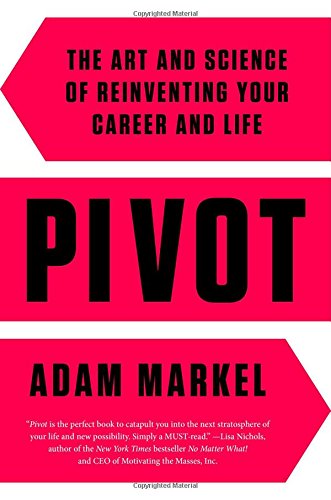
Adam, it’s great to have you on the show.
It’s a pleasure to be here, Stephan. Thank you so much.
Let’s talk about, first of all, you’ve got a book, Pivot, that is a bestseller. Love to share with our listeners a bit about of what that book is about. Let’s start there.
It’s wonderful. Several years ago, I started this project, this writing project. I’ve never written a book. I’ve been collaborating in a book. I’ve written chapters in a book in other people’s books and in compilation books and that sort of thing. I was in a transition point in my life and started to think about our kids. I’m really blessed that I’ll share a number of things if it’s appropriate at certain points. I’ll share some of my personal history. But I’m married to a woman I met in college, so my college sweetheart and we’re married 28 years.
Wow, that’s awesome.
I just have a really blessed life together. Blessed relationship together. We’ve also been blessed with four kids. Four healthy kids. They’re wonderful, independent-thinking, beautiful souls. At a certain point in my transition, and I would say I was probably approaching something people call or refer to as midlife crisis. Instead of having mid-life crisis, I had a mid-life calling. That process of me not going into crisis but discovering more of the truth in my soul and making decisions in my personal life and in my business life that were reflection of that truth that I was discovering. That process was something I wanted to write about. Initially, I wanted to write about it in the context of what would it be like for our kids at certain point in their life at a certain point when they hit the wall, they might have been approaching their mid-life crisis or would just be questioning even in their 20s or early or later what were they doing with their life, why they were doing what they were doing. What the purpose in life was. All those kinds of things. These really difficult questions. I wanted to write a book for them, for our kids to share with them whatever wisdom I had gained as their senior. I’ve been down that road before them and I learned some things and I wanted to share that from a father’s perspective as well as just from a human perspective. As I started that writing project, I started to write a lot of things and most of it was kind of gibberish at the beginning, our oldest daughter Chelsea, said to me, “Dad, I hope you realize that this book is not just for us. This is a book for a bigger audience. That audience is the world.”
Instead of having mid-life crisis, I had a mid-life calling.
I did one of those moments, I kind of took a gulp, I looked at my daughter and had tears well up in my eyes. I realized in that moment how true that reflection was back to me which she was saying to me was , “Dad, this is an opportunity for you to share a bigger message or share that message that you have, and the learnings that you have, with a bigger audience of people. Therefore, you can play a bigger game in the thing that’s driving you.” The thing that had been driving me at that point was to be a channel for God’s love to be an expression of that love in my teaching, in the work that I was doing with the people, in the business space to help them develop their businesses or their entrepreneurial pursuits, or to help them to develop themselves in their own human potential. This was a bigger way for me to share with more people these things that were so important. I had that awakening and that moment and decided to write this book, Pivot: The Art and Science of Reinventing your Career and Life. That’s where the journey began. It took three years to write, and complete, and edit, and publish, and sell, and all the rest of it. It has, thankfully, become a worldwide bestseller. That’s been a blessing.
Amazing. You already had a calling to reach a larger audience before the book though. The book is great. You’ve also done a lot of speaking from stage, Peak potentials which became Peaks. I’m curious how you ended up speaking to I don’t how many thousands of people on stages – where did that come from?
Good question. It was following the guidance. Initially, the guidance was I’m miserable doing what I’m doing and I wanna do something about it. I’ll share a little more detail on that. The Harris Polls even today suggests that more than 50%, 53%, 54% of people that are in jobs are looking for other jobs. They’re not happy in the work that they’re doing. They’re not doing the thing that they’re meant to be doing in their own view. 80% of people polled say that they’re not working in the dream area whether it’s their business or their job, they’re not doing the dream job. They’re not doing their calling kind of thing. They’re not doing their dream. That was me. I was a statistic among others. What that looked like was that I would wake up in the morning, getting ready to go out to do my deal for the day which, by the way, was a lawyer. I was at 18 years as a practicing attorney in New York and New Jersey. I had offices in both those states, very prosperous, I said prosperous not so easily, but it was productive and a prosperous practice in this multi-stake law arena.
I woke up probably from about the sixth or seventh year into my practice, feeling like I’m not sure if this is what I’m supposed to be doing. I wasn’t really certain. It was really what was the highest expression of my gifts and talents in the world. I wasn’t asking those kind of questions. I was just angry. For me, back then, I didn’t have an articulation. I didn’t have a language, a personal development language or a language around I’m not happy. I just felt unhappy. I just felt miserable. Even though I was so grateful to be married to this amazing woman and have four kids that were healthy as I said earlier, I still woke-up in the morning feeling anxious, feeling antsy. That’s how it started. I just use to have this little twinge of discomfort in my belly and my stomach. That turned into me feeling a little anxious during the day sometimes, feeling a little fearful. That what I was doing wasn’t the right thing to be doing with my life. That then turned into me being angry at times. Often, easily angered. I was a lawyer. I was a litigator, litigation attorney. I had a lot of outlet during my work hours for my anger and my angst. Then it turned into me not being able to sleep well at night. For a period of time, I was taking Ambien just to get to sleep. I would have trouble sometimes if I woke up in the middle of the night getting back to sleep. The next sort of thing that it morphed into was me putting my feet on the floor in the morning and having this dread feeling about the day. Just feeling like I don’t wanna get out of bed, not to do that. If it was the weekend, I had no trouble.
I put my feet on the floor on a Saturday or a Sunday, I didn’t feel that way. But on a Monday, Tuesday, Thursday, whatever it was, I put my feet on the floor and I had this anxiety about the day and this dread. I start to pay attention to that. But I didn’t know what to do about it. Ultimately, I started to feel this misery kind of welling up inside of me. It would get to the point where I would just go periods of time where I didn’t wanna connect with people. I didn’t wanna go out and do dinners and be social on the weekends with people because I wasn’t comfortable with myself. One Saturday, I remember it culminating kind of a low point, I was driving and my wife was in the car with me near home, I pulled off the side of the road, I put in park, got out of the car, went around to her side, and asked her to take over and to be the driver. She didn’t know what was going on. Probably just assumed that I wanted to do some work, get on the phone, and do work. Because I was workaholic, 70 hours, 80 hours, was typical for me. I directed her to go up here, make a left, make a right, that kind of thing, and the next thing you know we’re pulling into the hospital, local area hospital. I asked her to just drop me off and park the car and meet me inside. I still didn’t tell her anything but I’m now sweating profusely. I’m walking into the emergency room. I’m sweating and my heart is pumping so hard. I sit down and I told the nurses, I get in, “I think I’m having a heart attack.”
I have all this regret in my mind that’s only fueling what I’m feeling on the inside that much greater.
At which point they don’t even do anything except get you a wheelchair and move you to a different spot. Asked me questions about different things and they’re taking all these information on the chart as they’re wheeling me in. The next thing I know I’m lying on a gurney. My wife comes in standing by my side. I’m lying and she’s standing there and I’m thinking to myself, “I cannot believe that my life is gonna end today.” I’m in disbelief that this is how it’s all going to end now. I have all this regret in my mind that’s only fueling what I’m feeling on the inside that much greater. I’m sweating and my heart is pumping so hard it feels like it’s gonna pop out of my chest. The next thing I know, the doctor walks in. He looks at his chart, he looks at my wife, and he looks at me, and he says, “Mr. Markel, I just wanna tell right out the gate, you’re not dying. You’re not having a heart attack. You’re not gonna die today.” No sooner than the word that left his mouth then I looked at my wife and we both started to hysterically cry. Like the water works pouring out of our eyes. I am balling tears of relief in that moment because all I could do was think and feel so bad, badly then that I wasn’t the dad or the husband or the person that I had expected that I would be 10 years earlier, 15 earlier.
I didn’t even recognize myself at that point. A lot of deep breaths later, the doctor says, “Look, you’ve had a lot of coffee. I see on your chart, four or five cups is average for you. You’re having trouble sleeping and you’re a lawyer for crying out loud. You’re in this high-stress environment, and you’re not sleeping well, and you’re caffeinated.” He says, “You’re having an anxiety attack. This is an anxiety attack, not a heart attack.” He just stayed with us. He was compassionate. He was really wonderful. He says, “Look, I’ve seen guys come in here your age that don’t walk out. This is a blessing. You’ve been given a great gift today to be able to get the news you’re getting.” We walked out of the hospital that day, holding hands, and looking up at this beautiful blue sky, this autumn sky in New Jersey. I looked up and I said, “Thank you, God.” Those are words that were not familiar to me. I was not religious by any means. But I believe that was spiritual but I didn’t have words and I didn’t have conversation at all for it. I said those words because I felt so grateful in that moment that I’ve been given this reprieve, that I got a second chance. I didn’t even know what that was gonna look like, I just knew. In that moment, I’ve been given a gift and I was not gonna squander it. That’s how this sort of road began, this road to me wanting to change my life, wanting to reinvent which is the topic that I’ve trained, and taught people about, and wrote a book about.
It wasn’t long after that coming out of the hospital feeling the way I felt that I picked up some books including The Road Less Travelled by Dr. Scott Peck. I started to explore what it was that was going on with me. I knew I was gonna make changes. I started to make changes. I started to get feedback pretty quickly from those changes that I was making. I can get into that too in a little bit. But the small changes that over time, over a few months, over a few years, those small changes really transformed my experience of living, and my business experience, my life experience. Then I got to teach. That was the blessing is that what I learned and the pain that I’ve been through and how I came out the other end, gave me something I wanted to share with other people and with the world. Ultimately, I got to share it. I got to stand on stages in North America, all over US and Canada, all over Asia, and Europe, and Australia to share this concept of how it is that we create a business and a life that we love. How is it that we reinvent ourselves. How that process is on-going for so many successful entrepreneurs and other people. People love that message, they love learning about it, and that’s what gave me entree to, as you say, work it. That company called Peaks, New Peaks – when we took over for Peak Potentials and ultimately became the CEO of that company and wrote a lot of the curriculum and programs for it, and gave me a lot of opportunities to travel and teach, and be a leader. Because I consider teachers to be leaders. That gave me the opportunity to do all those things all over. That was and has been a huge blessing in my life.
If you wanna learn and teach, that’s the way that you get the highest retention rates when you’re learning with the intention to teach others. That retention rate goes from 30-some% up to 90-some%.
It’s incredible what happens when you teach somebody something that you’re either learning, in the process of learning or have learned in the past.
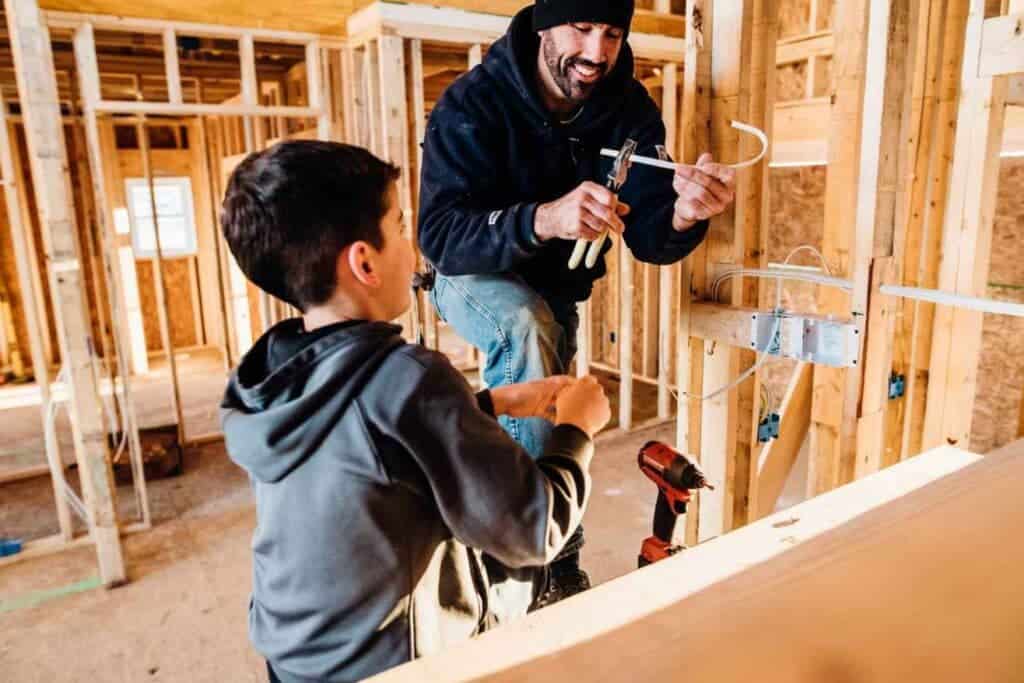
Awesome. That catalyst for change when you went into that hospital that one day, prior to that, you hadn’t taken any personal development courses, you hadn’t read any personal development books or anything?
No. I know it’s crazy. People ask me that all the time. I wasn’t a junkie for that stuff. My parents weren’t reading those kind of books. I haven’t been to a seminar or workshop ever. No, it was all brand new for me.
Amazing. After you got out of the hospital and you decided that this is a new lease on life, another chance, what did you start doing differently that – you were a workaholic putting in 80-70 hours a week, did you suddenly switch jobs? Did you suddenly quit your law firm? What happened there? Did you get some balance pretty quickly or did it take a while to transition?
Yes. Stephan, thank you for the way you frame that question because what’s embedded in the question is a myth. Sort of a myth or a misnomer that a lot of people believe. In order to make something significant, a significant change in your life, circumstance that you have to do something big. You have to really stretch the bounds of your comfort zone. I mean really stretch it. Sometimes, that means quitting your job or burning the ships, as the saying goes, and that’s just not the case. That’s the thing, in fact, more often than not, I’ve found keeps people stuck because it triggers so much fear in them. That if they put their life on the line, they’ve put their business and their livelihood on the line, that they’ll be irresponsible, that they’ll sort of risk all of it. They might go broke. They might go bankrupt. Who knows what else these awful stories that we tell in our heads and it’s those stories, those fear stories that keep us stuck in the same place.
Yeah. Often times, it surrounds not just what’s gonna happen to me but what’s gonna happen to my family if I’m not able to support the family. What happens to the kids and their private school, and the spouse, it’s a lot of heavyweight on your shoulders.
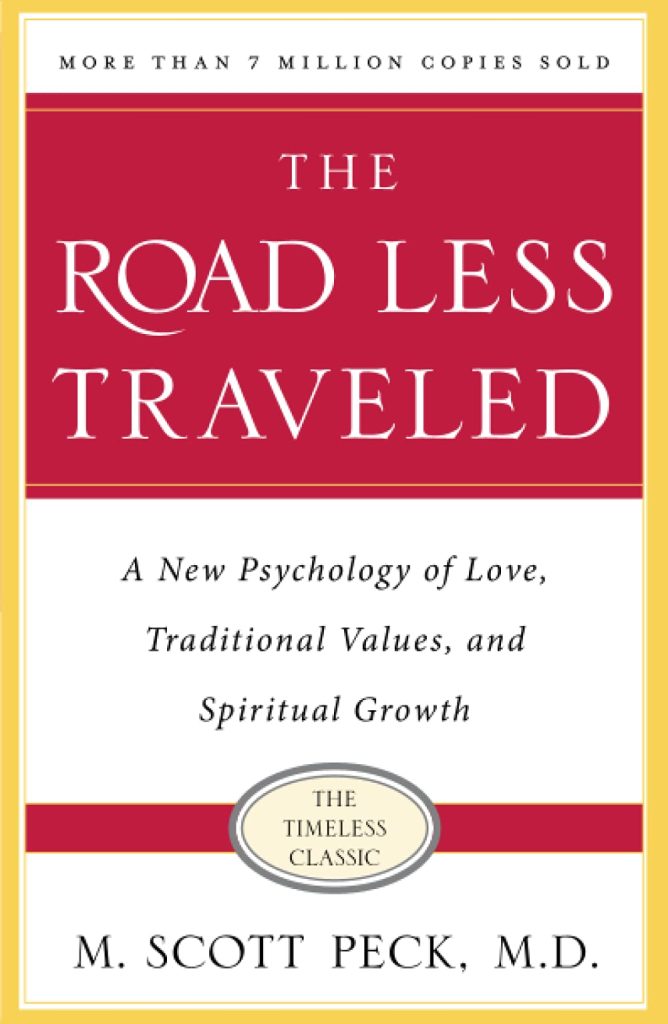
It is. It’s heavy. I can feel that even just you speaking about it helps me in this moment to feel empathetic for so many people that are in that situation where they know that there’s something more they wanna do, there’s something more they wanna explore. There are no guarantees. Nobody has a crystal ball. But to stay stuck, to stay in the status quo only leads to things that deplete our energy and degenerate our souls, meaning the status quo. When so many people are hungry for something and opt instead for the status quo, they’re opting for mediocrity and ultimately, we know the things that stay the same, ultimately stagnate. Like water when it stays still, it doesn’t move, it becomes toxic. It ultimately leads to a death of sorts. Even though it doesn’t necessarily mean a physical death right in the moment, it’s an emotional death. This is where people are, everywhere, living lives of quiet desperation as Henry David Thoreau said. It’s the walking dead, whoever coined that phrase, but it’s that walking dead syndrome. The fact of the matter is I don’t advocate that system that you’d have to jump ship or make radical change. What we have to do is get started making small changes that over time translate into a very different experience of living. That’s what I did and it took 2 ½ years before we moved 100% out of my practice of law into this other realm or teaching, training, and speaking, and authoring books, and things of that sort.
Okay, so 2 ½ years, and in that time frame, did you get a handle on your workaholism? Did you drop from 80 hours a week to something more reasonable and more healthy?
Yeah. I did and I didn’t.
When you’re starting a new venture, it takes a lot of time. I could see it being an 80-hour a week job just getting that new venture up and running.
For sure, except there’s a difference in the energy because for the last eight years, I haven’t felt like I have been working. Because I was pursuing and doing something that my heart was so invested in, and that I love so much, and I’m so passionate about it because I know it’s my calling to teach and to serve in this area, it doesn’t feel like work. I’m not saying I haven’t out in 80-hour weeks. I’ve probably put in 100-hour weeks at times. I’ve also had a lot of weeks where it didn’t look at all like that, where I’ve had a much more elegant existence. But the fact of the matter is, the work that I do and have done since I started on that Pivot path, didn’t feel like work. It didn’t feel like a drain on me. It feels and has felt like something had built me up from the inside out, and has only continued to fill my cup and energized my spirit and therefore, I don’t look at the hours. I don’t feel like it’s a job I’ve never had or I haven’t since I started down that path. That doesn’t mean it’s not hard. It doesn’t mean it’s not challenging. It doesn’t mean that I don’t put hours in. But it doesn’t feel like a job. Do you know what I mean?
Yeah, I know what you mean, for sure. I follow my passion so I can totally relate. How much of your time are you spending on the road traveling, speaking, running seminars?
It varies week to week, month to month. I typically speak once a month. That means I’m out and about somewhere in the US, Canada, or elsewhere in the world once a month. That’s typical. I do a lot of work online with people now. One of the beautiful things we’ve been able to create, because I’ve run this company for many years, this large personal development and business training company, and I was doing somewhere between 80 and 100 workshops a year. Not me personally but I would train 20, 30 workshops a year as well. I love that live training environment where we’re face to face with people. But it was something that I felt I was unhappy about one aspect of it. That was that so many people were not able to be there. Because there was time invested in traveling, and money invested in hotels, and all that kind of thing. More often than not, we saw a lot of people, and there were a lot of people that we didn’t see because it wasn’t the right venue for them to get working on themselves the way they wanted to even.
That was feedback we’ve gotten. What we’ve been able to do is convert a lot of our training material to an online format. We’ve got a Pivot Incubator Program for example that we’re actually just launching that we were delivering live and virtual at the same time. There was the next generation of it. Now, we’ve got a fully digitized version of it which is pretty amazing which has a live weekly component. I still sneak in to the live environment quite often because each week I do what we call ‘happy hour’. It’s like a Q&A session with the people who purchased those virtual programs, the online programs, and why I wanted that to be there is there’s pretty high statistics among the folks that buy a book and don’t read it or buy an online program and don’t use it, don’t open it, become shelfware or shelf help. I knew we had to have some way to have this accountability, have this live opportunity for people to connect and to build community.
What we have to do is get started making small changes that over time translate into a very different experience of living.
What we found, and I’ll brag for a moment here just to say this, we found that the communities that we’ve created using private groups on Facebook, the people get invited into when they become a part of that virtual workshop that we deliver, between those communities, between the actual training, the 15 modules of the Pivot Incubator Program, and the live interaction for Q&A each week that we call ‘happy hours’, people are getting very much the same results and experience that they got when they would spend three, four, five days with me live in a training. I know that’s a big thing to say but that’s what we’re experiencing and finding. That’s what we’re doing now which is, to answer your question, created a great deal more balance for me and my life because, as much as I wanna serve and help as many people, this thing called the internet is actually, and smartphones, and the technology, have supported this so massively now. System’s like Zoom, we use a platform called Zoom, that most people know about. This has given us the ability to touch many, many more lives and meet them where they are which could be them being at home or in their bathroom or walking out the street. Wherever it is that they’re consuming the content. That’s been a blessing, Stephan.
I see that trend going further and further into online, kind of virtual events, seminars, workshops, and so forth. There are even telepresence robots. Have you heard of these things?
No.
Yeah. You can have a robot that you control that’s at an event or tradeshow, at a seminar, whatever. You’re controlling it and you’re driving it. Your face is on the screen of it. It’s on this poll and the screen is at the top, it’s not quite the height of a human, maybe two-thirds of a height of a human, you can have it walking down the hallways, sitting in the seminar room. You’re virtually there. For somebody who’s in the audience, you’re essentially there because you’ve got your little robot there. They can talk to you by talking at the screen and your face is showing and you can hear them. But you can consume a live event that way which is pretty crazy.
Wow.
Yeah.
The AI possibilities now as well as the ability to holographically deliver people and things into a space is pretty incredible, isn’t it?
Yeah. That reminds of Tony Robbins is doing some holographic speaking now. Instead of attending or speaking live in person in Australia, he’ll beam himself in through a holograph, he will be live. It’ll feel like he’s there for the most part because he is kind of three-dimensional there and he’s ramped up. The whole audience, get them all excited in a peak state and all that, and he’s halfway around the world which is pretty crazy.
Yes, absolutely amazing.
You’ve got this Pivot Incubator Program which is an adjunct to the Pivot book?
Change is constant in the universe.
It is. It takes people through that process where if you’re pivoting in some area or you’re unsure whether you are, meaning there are two kinds of pivots that are happening almost all the time. One is one that’s by design and another is by default. What do I mean by that? Change is constant in the universe. Change is a constant and oxymorons, so to speak. It’s the thing you can count on, the things will change, because it’s the law of manifestation that things change. That’s how the caterpillar becomes the butterfly. It’s how the seasons change. It’s why the sun rises or it’s our perception the sun is rising and setting, it’s night and day. All of these things are happening cyclically in nature. It’s all about constant change. But yet, in our personal lives, in our business lives even, we want there to be constancy. We want there to be consistency. We want there to be something we can count on. Anything that changes that, equation scares us. We resist it. We don’t necessarily utilize the change that’s possible, the creative opportunities that are around us. That’s what’s remarkable about the Pivot work, the Pivot process. At least this is what we’ve heard from so many people who’ve read it, and used it, and the people who’ve attended our trainings for the Pivot process. It’s a system, it’s a process, it’s foundational. It helps people to not just manage change whether it’s the change that they’re designing because they realized like I did some time ago, that they didn’t love their lives, they didn’t wake up feeling the way they’re feeling, without enthusiasm or the other things that were symptomatic of the life that wasn’t as good as they wanted it to be. They didn’t have this much prosperity, money, success, however, they define that. They didn’t have all those things the way they wanted them to. They wanted to design something better. They were leaning in that direction and they did something about it.
There are other situations where they don’t often take the signs that are around. Then life delivers a change. For me, I ended up in the hospital. I hadn’t been really paying attention to those signs and therefore I ended up in the hospital with an anxiety attack. But I could’ve ended in the hospital with something worse. I could’ve had a heart attack that day. I could’ve had other things that were going on because I was ignoring the signs that were around that a change was coming. The winds of change were gently blowing and then if you ignore the gently blowing winds. Well, the universe says, “No problem. We’ll send you a hurricane,” so that you can pay attention more closely. That could be a health issue, it could be the loss of a job or a business that goes bust or somebody that up and leaves you or some other thing that goes wrong. Change happens and then you have to reevaluate right then, “What have I been missing? What’s the creative opportunity going forward?” In that moment, a lot of people are in tremendous disbelief and in resistance and even fear. The book and the Pivot Incubator Process helps to meet people there whether they’re designing or they’re in default for a Pivot and move them through the process to gain clarity, to get into momentum, and then ultimately to plan and strategize what that next iteration is in their life whether it’s a business iteration or personal one.
Another analogy similar to the wind becoming a hurricane, if you ignore it long enough is you get these hands from the universe that you need to make a change in their feathers. The feathers don’t hurt, but you ignore the feathers, and eventually, it turn into bricks and the bricks hurt. You can keep ignoring the bricks but eventually, the bricks would turn into a mud truck and that’s gonna be a lot bigger deal to manage. That’s another powerful analogy I quite like. Let’s say that you’ve gone through some sort of catalyst for change, you’ve had a wakeup call, and now you wanna go through a system for managing that change, getting ahead of it and being more a conductor of an orchestra rather than just getting swept up by it and just kind of a victim of it, There are no victims really, there are only volunteers. But you might feel like the story might say, “I’m a victim,” and then you give away all your power. But let’s say you don’t want that, you wanna be in front of the change and really guiding this to a positive conclusion. What are the steps in this process?
The first half of the Pivot process is to develop clarity.
Well, the first step as I said is that you gotta gain clarity. Clarity is one of these tricky sort of things. It’s tough to navigate your life from a place where you can’t see. I like analogies as well, kind of wanna do a book on analogies actually. One of them is this analogy of driving. Driving down the road of life, often times, I feel that people can’t see out of the windshield. Why they can’t see is because there is a lot of stuff from the past that’s caped on that windshield. It’s old beliefs, it’s fears, it’s doubts, it’s uncertainty about your identity. What you’re here to do. It’s uncertainty about your purpose. The vision you have for your work, your livelihood, other areas of your life. Therefore, it’s the inability to decide, to make spontaneous decisions that are right for you. Spontaneous right decision making is not effective. It’s not a skill that a lot of people have because they’re unclear, they’re unclear. What we have to do at the beginning, and this is the first, sort of half of the Pivot process, is to develop clarity. To clean the windshield, so that we are then therefore able to take those steps down the road. It’s six pieces to that equation.
The first is to unbelieve, it’s looking at the belief system, where you’ve been programmed and the opportunity to unbelieve certain things that have basically created all of your results in life so far. It’s letting go, that’s the second step. Where are the things you are holding on to that you could otherwise let go of, that would again give you the energy, give you the creativity to be able to move forward. It’s facing fears, identifying the things that have stopped you, and why. What fear stories you’re still perpetuating. The fear stories that you’re still playing out in your head mostly, but also in your actions. It’s getting into what we call the Pivot phonebooth which is you determining your true identity. I mean true identity in the moment. I don’t believe we’re born within an identity and it doesn’t change over time. The identity you have when you’re 19 is different than when you’re 29, and it changes. It very well would be different, it could be different when you’re 37 or when you’re 52. Those identities change over time and we have to examine them. When we’re aware, when we’re conscious, and we’re present, we can do that examination and make it real in the moment. We’d get into the pivot phonebooth is one thing, thinking we’re one identity and will discover through the process that we’re really something else.
For me, I got the Pivot phonebook in my 20s, thinking I would be a lawyer or that would be my identity. Sure enough I did. I went in as a student, as a college grad, and a teacher, I was a junior high school English teacher. The Pivot phonebook came out three years later as a newly minted attorney. Passed the bar exam the first go, started practicing law. 18 years later, I found myself reexamining who I was and my identity in the world. I then entered the Pivot phonebooth again, this time more consciously, and discovered that my true identity was a teacher. I didn’t wanna teach English junior high school. That wasn’t my calling to teach that. That wasn’t my purpose. But, the fact that I knew that I was a teacher, helped me then to come out of the Pivot phonebooth with that identity. Sure enough, I became a teacher. Then my purpose was more clearly defined in how I wanted to teach, what did I want to teach, what was the content I wanted to share, and who did I wanna share it with.
Ultimately, I discovered it was many small business owners and entrepreneurs and people that were reinventing, that wanted to reinvent themselves or were in the process already of reinventing themselves. Then of course that sixth piece of the puzzle is deciding. I made some decisions and along the way over 2½ year period. I decided I was closing down my law practice permanently and retiring from the practice of law in the East Coast. Ultimately was going to pursue this teaching that led to training, that led to my becoming a CEO of a company, that was a training company, and then ultimately, teaching people all over the world. Writing a book and teaching this course work online. That’s the first piece in the process, gaining clarity. The second piece is getting into momentum which is more about behaviors as you imagine than it is about the belief systems and examining what it is that we do and why we do it is one thing but then doing something different is a whole other thing. What I’ve found is that this is much an analogy of dominoes. In essence, dominoes is one of these things that proves up and shows, as an example, Newton’s law of momentum which is that a body at rest tends to stay at rest, and a body in motion tends to stay in motion. You knock over one domino, it naturally will knock over, tip into another domino and knock it over and so on and so forth. I think this is a world record with more than a million dominos that had been knocked over in a single time. That’s incredible. That’s amazing. But that’s not the whole story.
Rituals lead to a process, a recipe for resilience.
What the sort of the bigger aspect to that story to me is not so much that the body will stay in motion that is in motion. It’s the fact that with the domino analogy, if you take a domino, that’s only just shy of a half-inch tall like 3/8 of an inch high, it will not only knock over another domino, but it’ll knock over domino because of Physics law. It’ll knock over another domino that’s 1½ x its size. It has the capacity to do that. You knock over one domino and then another one, that’s 1½ x its size, you say, “Well, what the big deal? Adam, that doesn’t sound like much you’re with 3/8s of an inch high domino, so what?” Well, here’s the crazy part, by the time you get to the 29th domino, the domino is the size of the Empire State Building, that’s the potential when you see momentum in action. Because it’s not just knocking over the next one. It’s the ability to take the step, even a baby step, that leads to another step that’s slightly bigger than that one. That’s really the power of momentum. In the second half of the process when we talk about behaviors and doing things, we start with baby steps. We start with the things that are small that you can take action on because you got that clarity now. Then we get into the areas that support you. Your rituals, the things that you do not just habitually but the things you do consciously again and again.
What are those rituals that will support you in reinventing in some areas of your life? Because the next piece in the puzzle is resilience. You gotta be resilient to be a small business owner or business owner of any kind, an entrepreneur of any kind you gotta be resilient, and in life in general. We have to be able to bounce back, come back from setbacks, and be able to utilize the change in an elegant, and graceful, and productive way. That takes support and we gotta support ourselves. Rituals lead to a process, a recipe for resilience. We’ve gotta be committed to a couple of other things which is our own growth. The people in our lives that support us in that growth. The Pivot people we call them. That sort of book ends and what this process looks like. But, by the time that we’re done with it, what we find that’s magical is that people can take the clarity they’ve got, the clarity they’ve been yearning for, they’ve been craving for many, many years often, and put it to work in some area, to take some action, and baby steps themselves forward, toward their dream, toward their reinvention. We’ve had crazy things with people that we’ve worked with, that have started massive businesses out of nothing, out of thin air. We’ve had clients that we talk about from the past that have started businesses as big as an Airbnb.
In fact, somebody that was featured in our book is one of our case studies is one of the co-founders of Airbnb. It started with an idea that became and has become something like an $80 billion enterprise. But there are so many other stories of people who just, they weren’t clear about the businesses they want to get in and so they got clear. They had too many ideas and they weren’t sure which one of those ideas, forever and ever, they’ve had all these ideas about being an entrepreneur. Starting something on the side even while their full-time business or their full-time job was going on. They didn’t know how to make the decision to choose. They were able to choose and just get started. We’ve had people triple their business income, all kinds of things related to their relationships and their health because the process, the Pivot process, this incubation process is really nurturing and it’s foundational. It’s only after that process is complete that people get to examine the planning stage and the stage of strategy. That’s the right thing. That’s the putting the cart behind the horse instead of the other way around where so often, people are just looking for a shiny penny, and a quick solution, and a quick strategy to create some new result in their life. That’s just never worked in my experience having worked with so many thousands of people. This Pivot Incubator Process really, really helps people meet them where they are, and get them in action, creating results, and that’s what we love so about.
You gotta be resilient to be a small business owner or business owner of any kind, an entrepreneur of any kind... and in life in general. Share on XYeah, that’s great and I love the example you gave of Airbnb. I heard one of the founders tell the story of their humble beginnings. Most people don’t know where the name Airbnb came from. They actually had an airbed that they would blow up and use for guests, and it was jokingly called the airbed and breakfast. So Airbnb.
It started in a way that people even thought that they were nuts to do it. Because it was a convention, it was the Democratic National convention. Joe is a dear person to us, Joe Gebbia, Jr. His partners which was Brian, I think, only at the time, and they just said, “Hey, listen we can rent down a space, nobody can find a hotel room, we’ll just blow up the air mattress,” like you said, and rented out. I think they got $75 or $80 for that first night. That was the birth of the pivot, birth of an idea. Incredible innovation. We’re living in times of constant change which means times of constant innovation. You could call it disruption but that’s where the greatest opportunities lie for business owners and people who have an entrepreneurial spirit. What’s really intriguing, I don’t know if you know this, Stephan, but the greatest level of entrepreneurial activity right now is in the age demographic of above 50. Over the age of 50 is where people are creating some of the most magnificent businesses out of thin air, which is amazing.
Yeah, Louise Hay, when she started Hay House and built her empire, she didn’t start until she was in her 60s.
Exactly.
Yeah. I’m curious about when you talked about the first phase of this process clarity and one of the first steps in that clarity phase is to unbelief. Tell me a bit more about that what that means for you, like unbelieving, is that shedding some belief systems that don’t serve us, is it going skeptical with whatever people are trying to feed you or what is that process of unbelieving?
Stephan, it’s not skepticism. It’s looking at the fact that we’re creatures of our beliefs. We have habits and we do things the way we do them, because under the surface, the root of those actions and those habits is beliefs. We often believe, we believe without questioning, and that’s the problem. Because those beliefs are not ours often. They are the beliefs of people around us that were influential in our lives, whether it’s our parents, grandparents, even the media. But the belief systems that we’ve adopted have not, for the most part, been questioned by us. It’s that questioning, that being still in the curiosity of why it is that we believe what we believe, and then exploring further the root of those belief systems and then getting to decide, this incredibly empowering opportunity, we have to decide whether or not we wanna continue to believe that stuff.
The belief systems that we’ve adopted have not been questioned by us.
Yeah.
A lot of people have all these hang ups about money and all of their different areas of their lives. We’ve never questioned it or unearthed why it is, what’s the root cause why we believe what we believe. That’s the process that we start at the very beginning of that clarity creation segment.
Yeah. Tony Robbins teaches this thing I really like which is there are no true beliefs. There are only either empowering or disempowering beliefs. If you shed this idea that this belief is true or not true and just say was this empowering or is this not empowering?
Exactly. It either helps you move forward or it stops you.
Right, there could be all sort of arguments one way or the other. But does this belief serve you? For example, you could believe that we live in a friendly universe, and so many people could try and squash that belief and tell you all this evidence against it, but would that serve you to relinquish that belief that we live in a friendly universe? I would call that an empowering belief. If you kind of have that view point that’s gonna serve you better than trying to find the ultimate truth. Another thing too about truth is that Byron Katie talks about your thoughts, and how to ascertain whether they are true or not. Just having critical thinking and going through what she calls ‘The work, the four questions and the turnaround. Is it true, can I know with absolute certainty it’s true, how does that thought make me feel, what would life be like if that thought didn’t exist. Then doing a turnaround or multiple turnarounds where you come up with the opposite of that thought that you’re having as a way to eliminate sufferings. You have this thought and it’s causing you to suffer but we’re not thinking about our thinking, we’re just in it. It’s such a powerful process to go through, Katie’s process of the work. I interviewed her, by the way, on this podcast. Episode 33, listeners. She was really, really good, amazing. She’s incredible. She’s changed a lot of lives.
Yeah, I know. We love Byron Katie’s work. In fact, it’s a blessing of ours that we get to go away with a group called The Transformational Leadership Camp twice a year. She’s a member of that group. I, without revealing, because I think it’s important that people experience this organically, there’s a process that we use in the Letting Go section which is similar in some respects, the things the people are attached to. I think Buddha said or was attributed to have said that all suffering comes from the attachment. The attachments that we have that are often unconscious attachments really weigh us down in so many ways. They suck, they’re kind of energetic leaks in the container of our lives. I really welcome people whether it’s to get the book on Amazon or it’s to experience our online training which is much more interactive and hands on in this area. Again, if what you’re feeling is that there’s something maybe that is created opportunities for sabotage, that you’ve sabotaged your success in the past or that you feel like you’re not again moving at the phase that you’d like to, getting the progress or making progress at the pace that you’d like to, there’s a good chance just as you are referring to that work, that there’s something that’s energetically holding you back.
It’s almost like walking with a knapsack or climbing, hiking on a mountain with a knapsack that has a lot of bricks in it. You’re carrying around things that, we all do carry around things, attached to things that are slowing us up, that create this energetic train that cloud our views, sort of. To keep to the analogy of the clarity piece. Because, to me, ultimately, these things cloud our ability to see clearly. If we can’t see clearly where we’re going, we can’t move there with assertiveness. I think, it may have been, I don’t know if it’s George Harrison, somebody said that, ‘if you don’t know where you’re going, any road will take you there’. That’s my experience. A lot of folks and I’ve been there and I find myself there again and again as well. We have to get clear and be clear in where we’re going so that we can navigate that course and be moving and have our energies consolidated and directed and concentrated in that area. If we don’t have that clarity because we are holding onto past grievances, we’re holding on to other things, or attached to the things that give us a sense of comfort, we don’t have to be with our pain, we don’t have to be with our fears. Those things have to be examined at some point. That’s a part of the spiritual path that we’re all on, is to examine that inside of us. The origin of that pain, the origin of that suffering which often is the attachment and it’s often those belief systems that we’re not even aware of. I really invite people to dive deeply in, to get a Byron Katie book, to explore any place, to listen to that podcast 33. Is it 33, Stephan? Is it that the one?

Yep, that’s the one.
I’m gonna go check that out. I’m a lifelong learner. I also invite people who wanna check out some of what we’re up to. I’ve got a beautiful opportunity for people to do that whether it’s to get the book or even to go a wonderful place within our community. We’re on Facebook. We love to gather people in a group that we called Start My Pivot. It’s Start My Pivot community on Facebook where you’ll meet a lot of people just like you. They’re gonna be vulnerable. They’re gonna be spectacular in sharing their celebrations of the things they are pivoting into whether it’s the business things or some personal stuff. The community is curated so there’s no promotion in the community. We look at people carefully as they come in to make sure they’re a good fit as well. That’s Start My Pivot community is wonderful. You’ll get a lot of support there. You’d be able give a lot of support as well.
Is that something you can be involved with even if you are not in the Pivot Incubator Program?
Oh, you know what, I’ll tell you about that really quickly too. The Start My Pivot community is a curated open, it’s a closed group but it’s open. Meaning we’ll allow people to ask to join and then they answer a few questions and we check out some things and then as they agree to the rules of the community which is no promotion and that kind of stuff and that they’re there to support, there to give, then we allow them access. Anybody can join that but it’s a closed group. Then the Pivot Incubator is a paid community. It’s a nominal sum but what we end up having is a much deeper exploration with people that are going through the process and want support in that Pivot Process for their businesses or other areas of their life whether, again, it’s so many different things people are pivoting into. A lot of new business owners and a lot of people that are wanting to learn how to be more effective at online marketing, digital marketing, they’re creating books, they wanna create thought leadership platforms, they wanna be transformational leaders, they wanna speak publicly, they wanna do all kinds of things. I’m just giving people starting meatball trucks, like food trucks and art galleries and all manner of things. If folks wanna find out more about that, the Pivot, that deeper experience of being in the Pivot process, and getting our digital trainings, 15 amazing modules that I personally train, as well as a live component that’s just me and you and our team and other pivoters once a week for 52 weeks. We do an hour Q&A which we call ‘happy hours’, we do that for an entire year. It’s really magical, miraculous things happen in that community. You can go to pivotincubator.com/join and you’ll be able to get information about that whole community, the modules, the online virtual program that we’ve got, as well as those happy hours that are included and a few other special bonuses that you can get access to there as well.
That’s great. If folks wanted to work with you individually, is that available as well an option? I’m sure it would be a wholly different price point but do you occasionally take on private clients?
Nobody’s really asked me that. It’s so funny, Stephan, that you ask me that because I, about a year ago, decided that I wanted to work with some people privately, and so I worked with a dozen, between 10 and 12 people a year. If anybody has a curiosity about that, it’s a very different experience, it has been my blessing. A blessing of the highest magnitude for me to do that. Stephan, thank you for asking about that. You can email te**@********el.com to get any information that you’d like about that. I had a woman from the Middle East read the book and get in touch with us and is running five different companies and she’s this incredible, incredible, very genius woman, productive, but just lacking in the inner knowing that she’s on the right path and was really unclear and really unhappy. Despite the money and all the other attributes of success, she was wanting help. She got in touch with us. Thank you for asking about that. We entertain those conversations usually it’s one of the members of my team or my wife that will get involved and just see if it’s a good fit.
Awesome! Well, thank you so much, Adam. It was a real pleasure. I enjoyed to have you on the show to chat about your story and thank you for being so open and vulnerable about the challenges that you faced and that catalyst that got you on your new path. It’s really inspiring. Thank you again. Thank you, listeners, we’ll catch you on the next episode of Get Yourself Optimized. This is your host, Stephan Spencer, signing off.
Important Links
Connect with Adam Markel
Tool
People
Books

